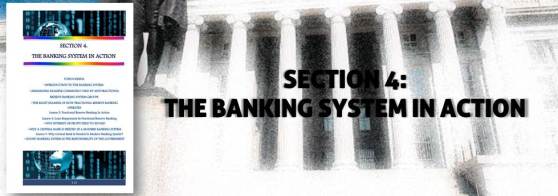PAPER MONEY AND THE BANKING SYSTEM IN ACTION (Illustrated & Explained)

In Book 1 of the 259 Trillion Vs 5 Trillion series, the terrible confusion between assets and money was thoroughly explained. Book 2 follows from the solid foundation laid by Book 1 so that the additional concepts are easier to grasp. Book 2 will explain the lies regarding exponential growth parroted by certain groups of ‘experts’ and then will dwell deep into explaining the statements such as “there are only 9 trillion of money but 32 trillion of debt, we are so doomed”. Doom and gloom sells, but the 259TVs5T is not out to scare readers until they can hardly sleep, but it is designed to explain the fundamental of the economic system and the banking system.
SECTION 3: PAPER THE NEW MONEY
Topics covered in this section:
Evolution and Transformation Of Money
“Money Is Backed By Debt” And “Money Out Of Thin Air” Explained
Exponential Growth Explained
Several interesting fundamentals of our monetary system are explained in this section. The three essential characteristic of an ideal form of money is presented and only two forms of money passed this critical test with flying colors. Money is backed by debt is thoroughly explained in this section, as well as “money out of thin air”. A very interesting part on Exponential Growth will be the one of the most important things ever explained in economics where painstakingly heavy data crunching, filtration and presentation were made, in simple and easy to understand format. The result will certainly shock you!
Then the shrinking of the purchasing power of our paper money is explained. The section showed that in reality, nobody is affected by the shrinkage of paper money over decades, except one group. After that, the performance of paper money investments and other kind of investments such as gold is compared over a very long period. The result will again, surprise you! Inflation and deflation data between gold and paper money is performed, and again, it is shocking! This part should be read in conjunction with “Another Take At Inflation” in Book 3 where it was shown that this very slow shrinkage of monetary value would not matter, and can be easily corrected, returning the value of money to where it once were.

SECTION 4: THE BANKING SYSTEM IN ACTION
Topics covered in this section:
Introduction To The Banking System
Misleading Example Commonly Used By Anti Fractional Reserve Banking System Groups
The Right Example Of How Fractional Reserve Banking Operates; includes Lesson 5: Fractional Reserve Banking In Action and Lesson 6: Loan Repayments In Fractional Reserve Banking
Why Interest Or Profit Need To Be Paid
Why A Central Bank Is Needed In A Modern Banking System; includes Lesson 7: Why Central Bank Is Needed In Modern Banking System?
Sound Banking System Is The Responsibility of The Government
This is the section everyone should read. It explained the confusion portrayed by anti-fractional reserve banking groups, by showing that banks can print money 10 times more than its deposits, or the infamous statement of bank is printing money out of thin air. The step by step explanation will be very easy to follow and you will be able to understand how banks actually operate. There are plenty of drawings, tables and the simulation presented is very logical, with eye-popping clarity, never presented anywhere else. From an initial deposit in the bank— that very first seed deposit, the bank’s lending business can start, connecting people with surplus assets, to those with great ideas but without any capital. The real role of banks is explained in a concise manner.
Once the inner working of banks is explained, the need for them to make money by charging interest is thoroughly investigated, dissected and explained. There is no doubt whatsoever why bank will need to charge interest. No usury is involved however. Our modern banking system is far more advanced than its older brethren of 300 years ago. The simulation of the banking system which initially involved only one bank is then expanded to involve two banks and from this simulation, the need of a master central bank is put in plain words. Finally, the book presented a great explanation on why the government must manage and must be responsible to the banking system as a whole, but not of bailing out individual banks.

Not to be missed are the video presentation files that accompanied this book. These videos will greatly aid anyone in understanding the concepts and explanations presented in the book. Do get it here; freely download in the digital content section.
